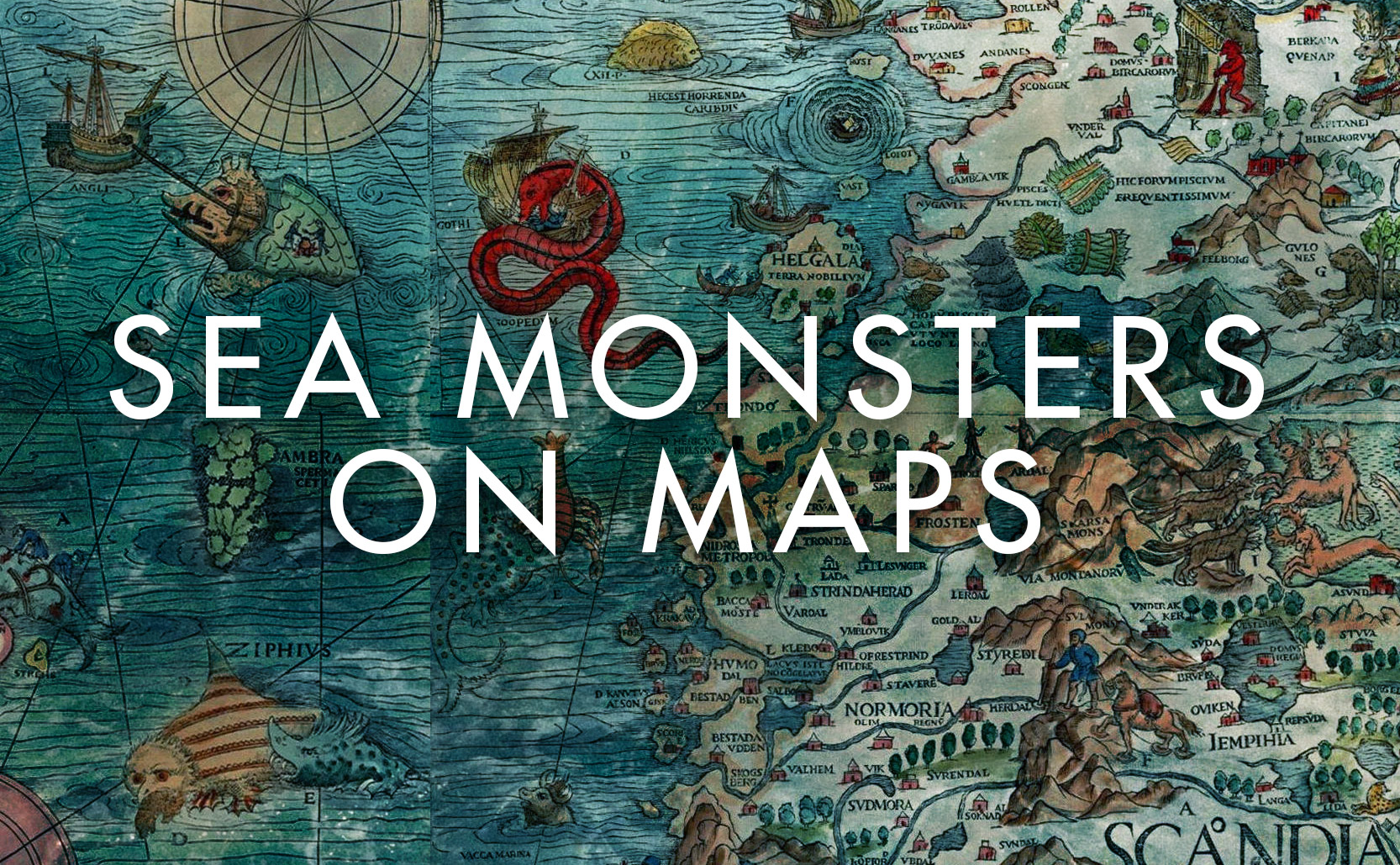Sea Monsters on Maps
The rise and fall of map sea monsters
Between the Middle Ages and the Renaissance exotic sea creatures were sometimes included in the watery regions of world maps. Many of the monsters were hybrid creatures – the top half was some land animal combined with the bottom half of a fish. This was in keeping with a long held idea from the ancient Greeks that anything on land had an aquatic counterpart in the sea. Sea rams, sea elephants, sea pigs, sea humans were all real possibilities. Over the centuries as explorers and traders traveled further abroad, they brought back tales of other strange creatures from around the oceans. Some of these beasts turned out to be real animals (such as whales) but others were just mistaken identity or entirely fictional stories. Either way, they ended up in maps.
Two kinds of maps
Generally speaking there were two kinds of maps in use during the Middle Ages and the Renaissance: nautical maps and general maps of the world (mappae mundi). Nautical maps were more utilitarian and typically did not include sea monsters as it cost extra to include them and the illustrations were generally not very useful when sailing a ship. As such, most of the maps that included sea monsters were world maps for home use to learn about the world beyond your home town/city and the possible dangers at the borders of our knowledge.
Sea monsters were frequently found at the edges of the map which showed that the world beyond what had been mapped was unknown & possibly dangerous. They illustrated in a real sense the wonders of the world. They were also a way to hide gaps in the cartographer’s knowledge by taking up space with big animal illustrations (rather than big empty areas). Sea monsters also helped the marketability of these maps which was good for business.



Eventually, the more sailors traveled the oceans the further out on maps the sea monsters were pushed. By the end of the 16th century much more of the globe had been explored & documented. The scientific knowledge of the flora & fauna of the world had grown and started to disprove some of these sea monsters. The more we learned, the unknown corners of the world in which to place these fantastical monsters eventually disappeared. By the 17th century instead of sea monsters on the margins there were illustrations of whales, other real life animals, or ships. This left us with more accurate, if a bit less interesting, maps of the seas.
Added info: Some sea monsters were included with ulterior motives. It is believed that Olaus Magnus’s 1539 map of Scandinavia included sea monsters in the Norwegian Sea to scare away potential foreign fisherman, and thereby protect the waters for the local fishing industry. A very Scooby Doo villain plan.
For more sea monsters, check out Chet Van Duzer’s Sea Monsters on Medieval and Renaissance Maps.



